A Comprehensive Guide to Painting Interior Doors: Refresh Your Home on a Budget
Table of Contents
Painting interior doors is one of the most cost-effective ways to refresh your home’s appearance and add a distinctive aesthetic to every room. Whether you want to refurbish old wooden doors, add a cohesive design touch, or simply update your home’s aesthetics, painting interior doors achieves stunning results without breaking the bank.
This comprehensive guide will walk you through everything you need to know about renovating your interior doors, from choosing the perfect finishes and colors to mastering professional techniques that guarantee beautiful, long-lasting results. You’ll discover the latest color collections, budget-friendly tips, and professional strategies to help you achieve a stylish look while avoiding common mistakes that can turn your home project into a costly mistake.
Types of Paint Finishes
Matte Finish
Matte paint provides a sleek, non-reflective surface, ideal for doors in low-traffic areas. This paint effectively hides minor imperfections and fingerprints, making it ideal for guest room or closet doors. However, matte finishes can be difficult to clean and show signs of wear more easily than glossy alternatives.
Pros: Hides imperfections, looks elegant, budget-friendly.
Cons: Difficult to clean, shows signs of wear, not suitable for high-traffic areas.
Eggshell Paint
Eggshell paint strikes the perfect balance between matte and satin, offering a subtle sheen and good durability. This versatile paint is suitable for interior doors in living rooms and bedrooms, offering easy maintenance while maintaining a sleek, minimalist look.
Pros: Easy to clean, subtle sheen, versatile.
Cons: May highlight surface imperfections, moderate durability.
Satin Paint
Satin paint is the gold standard for interior door paint, offering excellent durability with a soft, pearlescent sheen. This paint resists moisture and stains while being easy to clean, making it ideal for bathroom doors, kitchens, and high-traffic entryways.
Pros: Excellent durability, moisture resistance, easy maintenance
Cons: Brush marks may appear if not applied properly, higher cost.
Semi-gloss and gloss paint
High-gloss finishes offer maximum durability and easy cleaning, making them ideal for nursery doors, pantry doors, and high-touch areas. The reflective surface creates a polished, professional appearance, but requires careful surface preparation to avoid highlighting imperfections.
Pros: Maximum durability, easy cleaning, professional appearance
Cons: May show imperfections, requires professional application, and can appear garish.
Best Paint Colors for Every Room
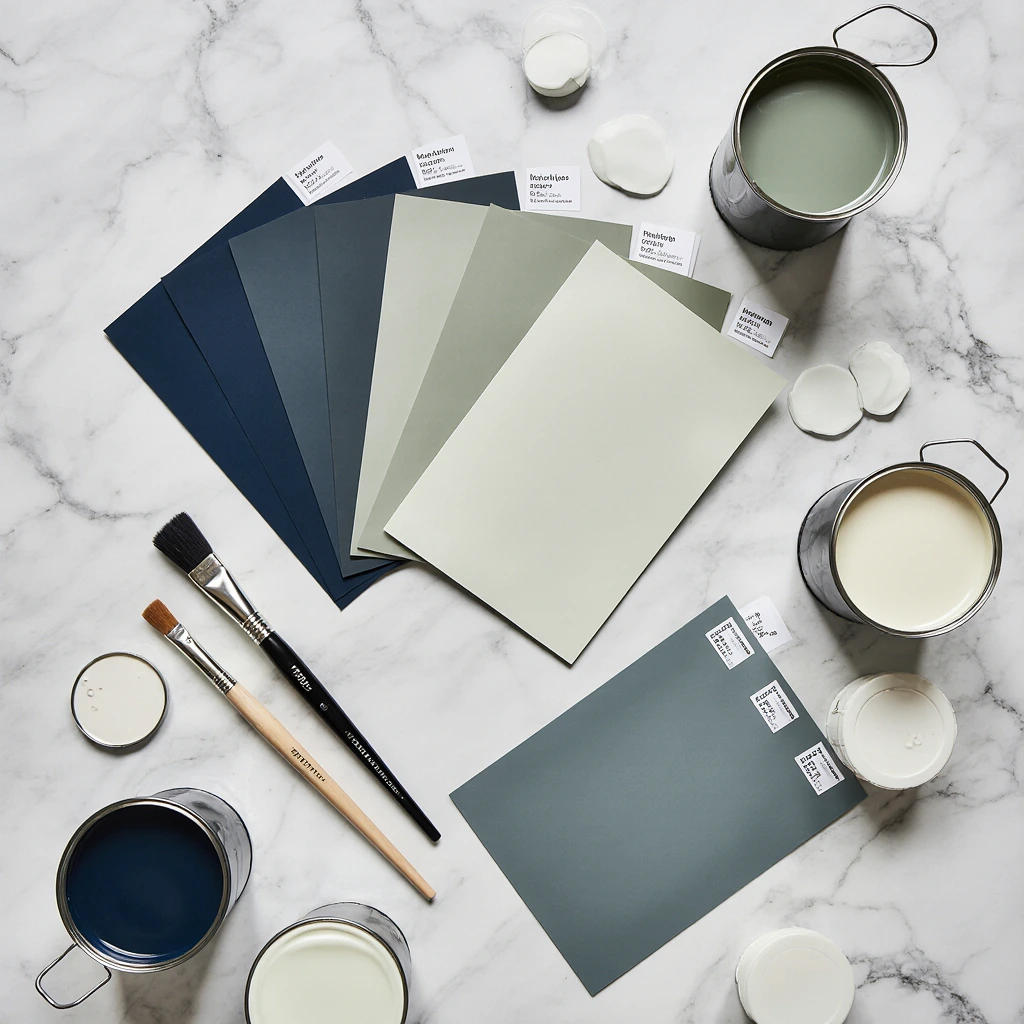
Bedroom Doors
Bedroom doors feature calming, sophisticated colors that promote relaxation and complement home decor. Soft blues like Misty Harbor or warm grays like Axible Beige create a calming atmosphere. For master bedrooms, try dark navy or charcoal for an elegant look, while children’s rooms can feature playful pastels or bold colors that showcase their personalities.
Color psychology research suggests that shades of blue reduce stress and improve sleep quality, making them ideal for bedrooms. Neutral colors like warm white and soft gray offer versatility and timeless appeal that don’t clash with changing decor trends.
Kitchen Doors
Kitchen doors should complement your cabinetry while remaining resistant to moisture and cooking grease. Classic white remains the most popular choice, adding a sleek aesthetic that makes spaces feel spacious and bright. For modern kitchens, try sophisticated grays or bold colors like deep green or navy, which add a touch of beauty without overwhelming the space.
Panel doors can be painted with chalkboard paint for practical organization, while doors leading to dining rooms should prefer colors that promote appetite and social interaction, such as warm terracotta or gray-green. ### Bathroom Doors
Bathroom doors require moisture-resistant finishes in colors that match your bathroom’s lighting and fixtures. Light, fresh colors, such as soft white, pale blue, and muted green, create a spa-like atmosphere and reflect available light, making small spaces appear more spacious.
For bathrooms, don’t hesitate to experiment with bolder options, such as bold black, deep burgundy, or metallic accents, which leave a lasting impression on guests.
Living Room Doors
Living room doors are transitional elements that add a distinctive touch to the atmosphere of your main gathering space. Neutral colors allow flexibility in changing decor, while accent colors add character to open-plan living spaces. Popular choices include warm white, elegant gray, and earthy tones that complement natural materials and textures.
Paint Color Combinations and Patterns
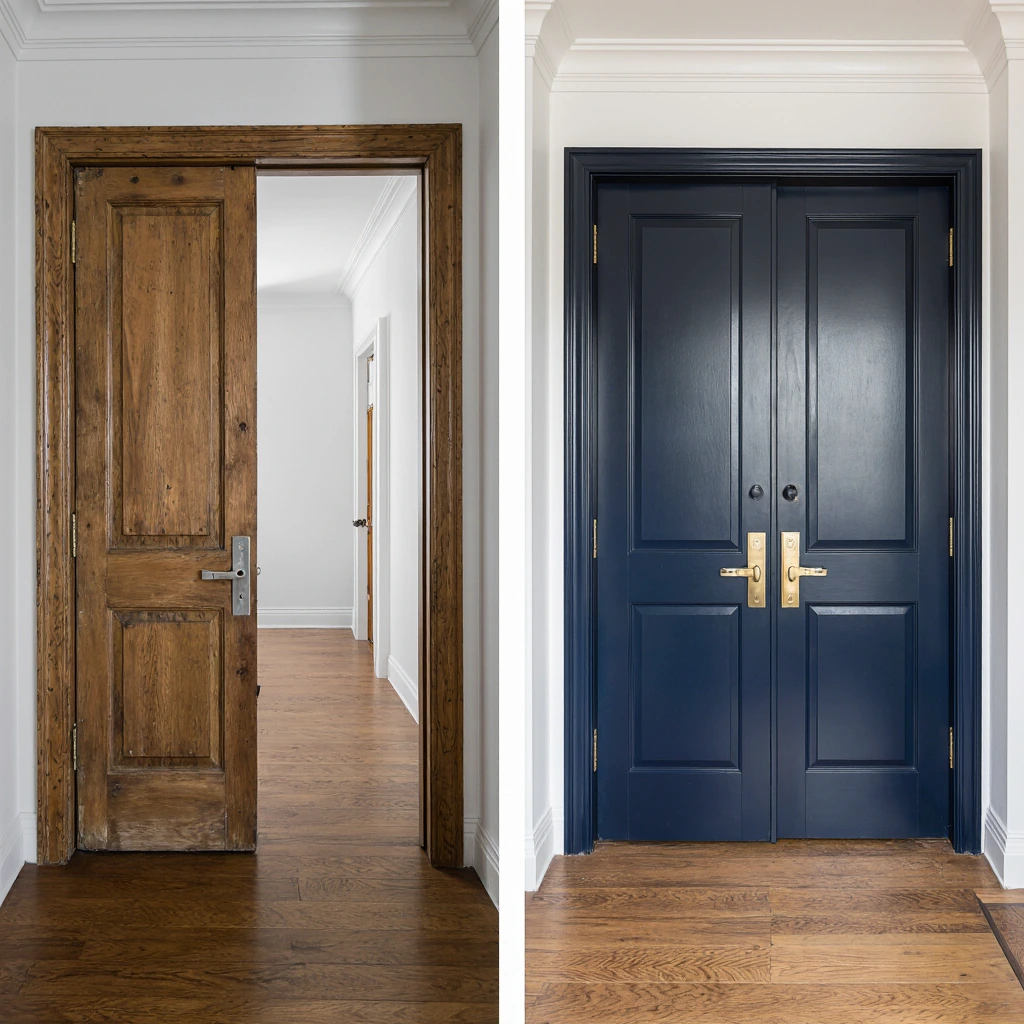
Neutral Color Palettes
Neutral color schemes remain the most versatile and timeless choice for interior doors. The classic combination of warm white doors with gray or beige walls creates a sophisticated contrast while maintaining wide-ranging appeal. Consider pairing “pure white” doors with “river pewter” walls for a balanced and elegant look that fits any architectural style.
Sophisticated neutral color palettes incorporate multiple hues, such as warm white with subtle yellow or pink undertones, with cool grays with blue or green undertones, adding sophisticated depth and visual interest.
Distinctive Bold Designs
Bold door colors add a distinctive touch to your home and highlight its identity. Dark navy doors with crisp white accents and soft gray walls add a touch of timeless sophistication with a modern twist. Emerald green doors complement brass fittings and warm wood tones for a luxurious yet traditional aesthetic.
For contemporary homes, consider matte black doors with white walls and natural wood accents, creating a striking contrast that conveys a sense of modernity and timelessness.
Trending American and European Colors
Current American trends favor warm, organic color palettes inspired by natural materials. Popular combinations include gray-green doors with cream walls, terracotta doors with warm white accents, and dark forest green with natural wood accents.
European trends lean toward more saturated, sophisticated colors with intricate textures. Popular European-inspired combinations include pale pink doors with charcoal walls, deep purple with warm gray accents, and rich burgundy with creamy accents.
Seasonal Suggestions
Spring color palettes feature fresh, optimistic colors, such as soft yellow, light green, and warm white, that reflect renewal and growth. Summer color palettes feature coastal blues, coral accents, and crisp whites, which create a relaxing and warm atmosphere.
Fall color palettes feature rich, warm hues, such as deep orange, burgundy, and golden yellow, which create a warm and welcoming atmosphere. Winter color palettes focus on sophisticated neutrals, navy blue, and elegant gray, which provide comfort during the colder months.
DIY Painting Tips
Essential Tools and Materials
Professional results require high-quality tools and careful preparation. Essential supplies include high-quality industrial brushes (2-3 inches for door panels, 1 inch for delicate areas), foam rollers for smooth surfaces, painter’s tape, protective rags, sandpaper (120 and 220 grit), primer, and your paint of choice.
Invest in high-quality brushes with pointed bristles for smooth application and crisp lines. Cheap brushes shed bristles, creating uneven coverage that negatively impacts your finished look.
Preparation Steps
Proper preparation determines the success of your project. Remove the doors from their hinges and lay them flat on wooden stands or a sturdy work surface. Remove all metal parts, including handles, locks, and hinges. Clean surfaces thoroughly with trisodium phosphate (TSP) or a degreaser to remove dirt, oil, and residue.
Lightly sand with 120-grit sandpaper to ensure adhesion, then move on to 220-grit sandpaper for a smooth finish. Fill any holes or imperfections with wood filler, allow it to dry completely, and then sand smooth. Prepare all surfaces with a high-quality primer suitable for your door type and chosen paint finish.
Professional Application Techniques
Use the “cut and roll” technique for professional results. Use a brush to cut around panels and joint areas, then immediately roll larger, flat surfaces with a foam roller to remove brush marks and achieve a uniform finish.
Use thin, even coats rather than trying to achieve full coverage in one coat. Two thin coats provide better coverage, durability, and appearance than a single thick coat. Allow adequate drying time between coats as indicated in the manufacturer’s instructions.
Common Mistakes to Avoid
Never skip the primer, even when using paint and primer products in a single coat. Primer ensures good adhesion and prevents previous coatings from bleeding. Avoid painting in direct sunlight or high temperatures, which can cause rapid drying and brush marks.
Don’t overload brushes or rollers with paint, which can result in drips and uneven coverage. Keep edges moist while painting to prevent overlap marks, and never paint over dust or dirt that wasn’t thoroughly cleaned off during preparation.
Cost Details and Budget Tips
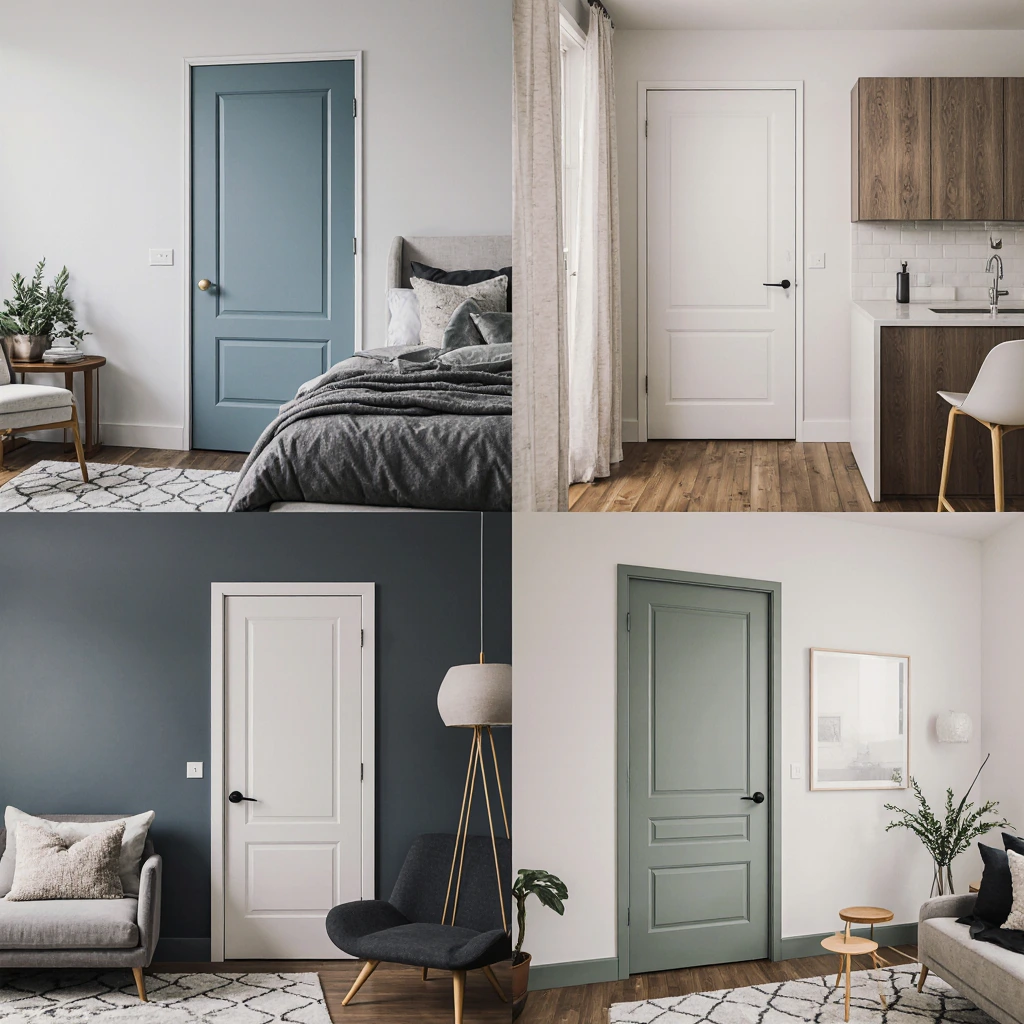
Estimated Costs by Room Type
Standard interior door painting costs vary greatly depending on the quantity, size, and quality of the finish. For a typical home project with 8-10 interior doors, expect to spend $150-300 on quality materials, including primer, paint, brushes, and supplies.
Professional painting services range from $75-$150 per door, depending on the location, door condition, and the complexity of the finish. DIY projects typically cost 60-70% less than professional services, while providing valuable skill development and personal satisfaction.
Money-Saving Strategies
Buy paint during seasonal sales, typically in the spring and fall, when retailers offer 25%-40% discounts on premium products. Buy larger quantities of paint when painting multiple doors the same color to reduce the cost per gallon and ensure color consistency.
Be sure to sample and test paint before committing to full quantities. Many paint manufacturers offer small-batch samples that allow you to test colors and finishes before purchasing full gallons, preventing costly color mistakes.
Eco-Friendly Options and Reuse
Low- or zero-VOC paints cost 15% to 25% more than traditional formulas, but offer better indoor air quality and environmental benefits. These paints offer similar performance while reducing harmful emissions during application and drying.
Properly stored leftover paint can be used for future touch-ups or finishing projects. Store paint in cool, dry locations and stir thoroughly before reusing. Consider donating unused paint to community organizations or recycling programs that prevent waste and help others with their projects.
Paint Trends and Inspiration
Color Forecasts for 2025
Leading paint manufacturers predict that earthy and muted colors will dominate interior design trends for 2025. Sherwin-Williams’ Color of the Year, “Cavern Clay,” is influencing interior door choices toward warm, neutral hues that connect interior spaces to natural environments. Biophilic design principles encourage the use of colors that mimic natural materials, including botanical-inspired sage greens, warm browns that reflect tree bark and stone, and soft blues reminiscent of sky and water elements.
Social Media Influencer Insights
Instagram and Pinterest data show a significant increase in bold and striking door colors, with searches for “black interior doors” increasing by 156% and “navy interior doors” by 89% over the past year. Home improvement influencers are consistently focusing on doors as focal points for affordable change.
TikTok trends focus on quick, budget-friendly updates with stunning visual impact, fueling interest in painted door projects that can be completed in a weekend while achieving significant aesthetic improvements.
Emerging Techniques and Finishes
Decorative painting techniques are gaining popularity for creating a distinctive aesthetic without the need for expensive materials. Techniques such as color washing, dry brushing, and layered glazing create custom looks that reflect personal style and artistic creativity.
Metallic accents and hardware coordination trends highlight cohesive design approaches, as door colors complement updated handles, hinges, and decorative elements, creating an overall look for a room.
Common House Painting Mistakes
Surface Preparation Mistakes
Inadequate surface preparation causes 80% of paint failures. Neglecting cleaning, sanding, or priming steps can lead to poor adhesion, peeling, and premature wear. Always ensure surfaces are thoroughly cleaned and sanded to ensure good adhesion, and use a primer appropriate for the underlying coating and the chosen paint system.
Rushing through the preparation stages to start painting prematurely inevitably leads to disappointing results that require redoing the entire project, ultimately costing more time and effort than proper initial preparation.
Color Selection Mistakes
Choosing colors based solely on small paint chips often leads to disappointment when applied to large surfaces. Paint colors appear different in different lighting conditions and may appear completely different on vertical surfaces compared to horizontal swatch cards.
Always test paint colors on actual door surfaces or large swatch cards placed in designated areas. Observe colors at different times of the day and under different lighting conditions before making a final decision.
Application Technique Issues
Applying thick coats for faster coverage can cause several problems, including paint dripping, brush marks, prolonged drying time, and poor durability. Professional painters always apply multiple thin coats for maximum coverage, appearance, and longevity.
Working too quickly without keeping the edges wet can result in visible overlap marks and uneven coverage, which negatively impacts a professional appearance. Take the time to maintain consistent application techniques throughout the project.
How to Maintain Painted Walls
Regular Cleaning and Care
Maintain painted doors through regular, gentle cleaning using a mild soap and water solution. Avoid abrasive cleaners or scouring pads, which can damage the paint finish and leave dull spots. Clean doors monthly in high-traffic areas and quarterly in less-used areas.
Treat fingerprints, scuffs, and minor stains immediately before they become permanent. Most modern paint finishes respond well to gentle cleaning when the stains are fresh, but they become more difficult to remove over time.
Touch-up Strategies
Save small quantities of the original paint for touch-up applications. Store the paint in tightly sealed containers and stir thoroughly before use. Apply touch-ups using high-quality brushes using light, graduated strokes so they blend seamlessly with the surrounding areas.
For best results, clean areas before touch-up and allow them to dry completely. Touch-ups may look slightly different initially, but they usually blend in unnoticeably after they dry completely.
Long-Term Maintenance
Protect painted doors from excessive moisture, direct sunlight, and extreme temperatures, which cause premature aging and color fading. Use door stoppers to prevent damage from handles hitting walls, and consider protective films for high-traffic areas.
Schedule repainting of painted doors every 5-7 years for high-traffic doors, and every 7-10 years for light-traffic doors, depending on the quality of the paint and environmental conditions. Regular maintenance prolongs the life of the paint and maintains its attractive appearance.
Conclusion
Painting interior doors is one of the most effective and cost-effective home improvement projects. From choosing the perfect paint finish and colors to complement the function of each room, to mastering professional painting techniques, this comprehensive guide provides everything you need to transform your home’s appearance while adding lasting value.
Remember, the success of door painting projects depends on proper preparation, the use of high-quality materials, and patience during the painting and drying processes. Whether you choose trendy neutrals, bold, statement colors, or seasonal themes, the secret lies in thoughtful planning and careful execution.
Investing the time and materials to paint interior doors pays off in increased home value, enhanced aesthetic appeal, and the personal satisfaction of completing a meaningful DIY project. With proper maintenance and care, your painted doors will provide years of beauty and functionality.
Try these ideas in your next home renovation and let us know in the comments how you did. Sign up for more home decor guides to help you create the perfect living space on any budget!
Best Amazon Picks :
FAQs
What is the best paint for bathrooms?
For bathroom doors, choose a high-quality satin or semi-gloss paint with moisture-resistant properties. Look for paints specifically designed for high-humidity environments, such as Benjamin Moore Advance or Sherwin-Williams ProClassic. These paints are resistant to mold, mildew, and moisture damage, while being easy to clean and maintain.
How long does it take for paint to dry before applying another coat?
Drying times vary depending on the paint type and environmental conditions, but typically, it’s 4 to 6 hours between coats of latex paint and 6 to 8 hours between coats of oil-based paint. However, complete drying takes two to four weeks, so handle doors carefully during this time. Always check the manufacturer’s recommendations, as some premium paints require longer repainting times for optimal performance.
How do I choose a color to match my furniture?
Start by determining your furniture’s color tones using natural daylight. Warm colors (yellow, red, orange) work well with warm paint colors, while cool colors (blue, green, purple) complement cool paint colors. Use paint swatches to test colors next to your furniture, and consider hiring a color expert for expensive or complex projects.
Can I paint dark walls without a primer?
Painting over dark colors without a primer rarely provides satisfactory coverage and often requires multiple additional coats, which ultimately adds to the cost of a suitable primer. A high-quality primer, designed for color blocking, ensures perfect coverage, accurate color rendering, and long-lasting results. Always use primer when making dramatic color changes.
What’s the difference between interior and exterior door paint?
Interior door paints prioritize aesthetics, ease of cleaning, and low odor, while exterior paints focus on weather resistance, UV protection, and durability. Never use exterior paint indoors due to high levels of volatile organic compounds (VOCs) and potential health problems. Interior paints offer better color stability and a smoother finish for interior applications.

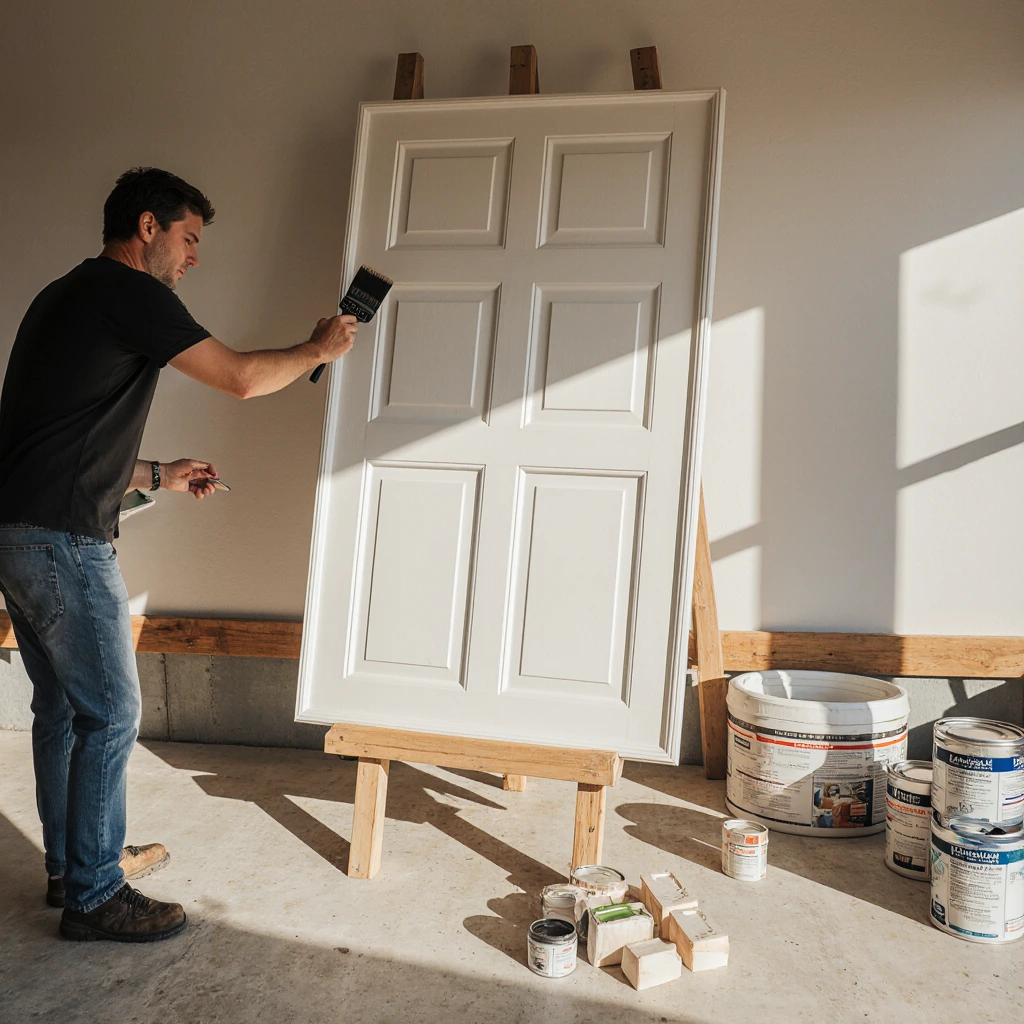
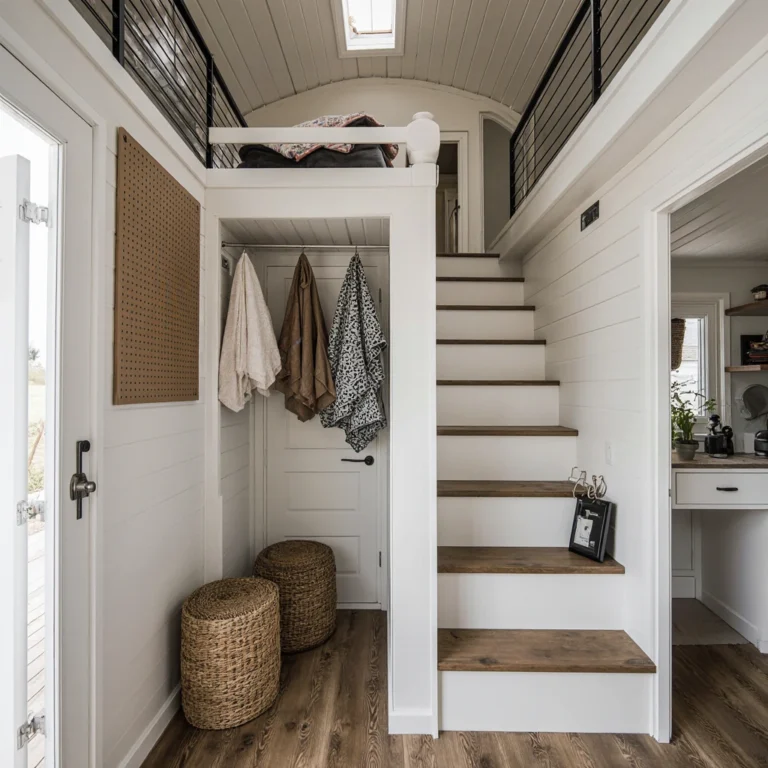
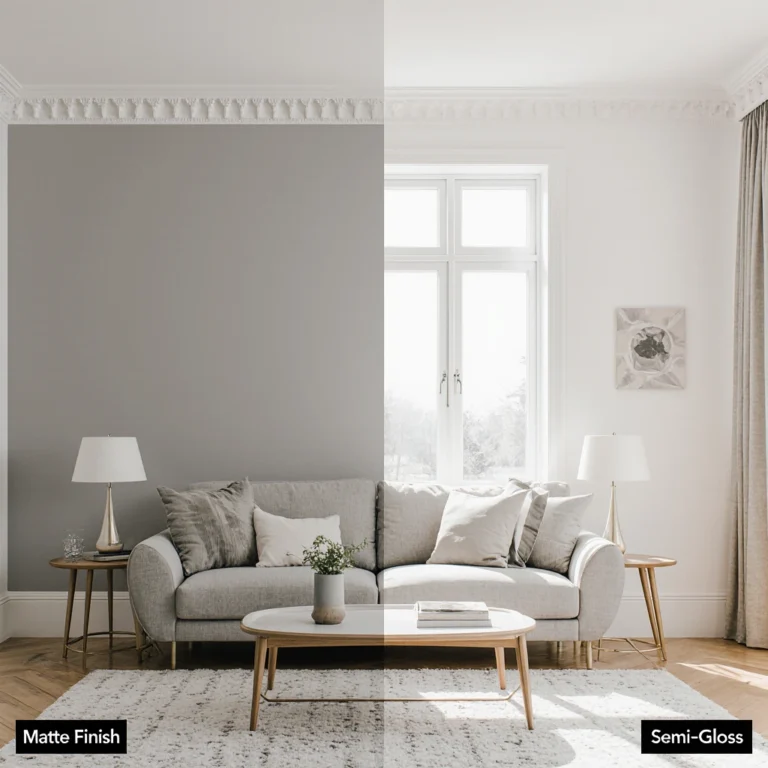
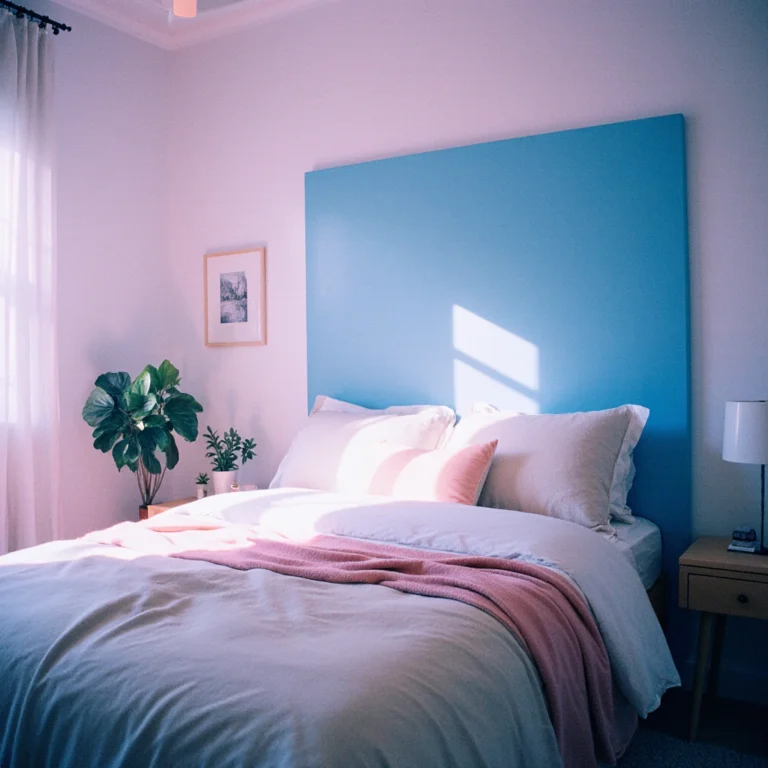
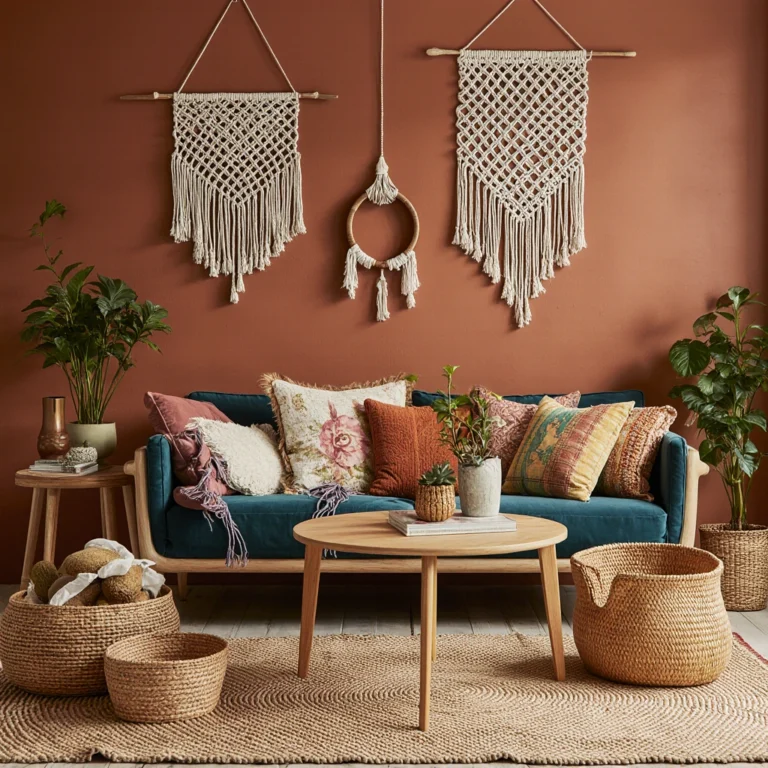
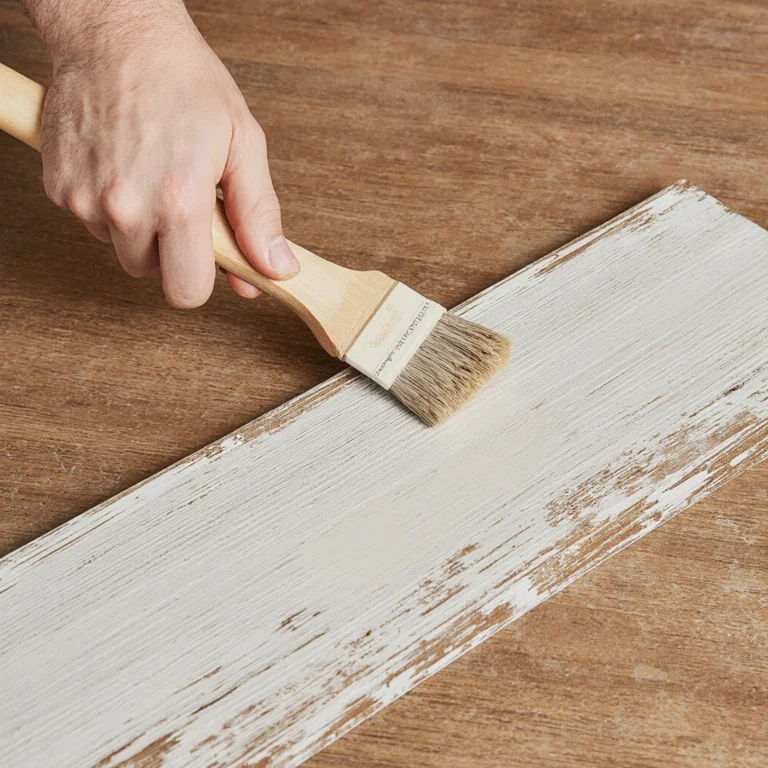
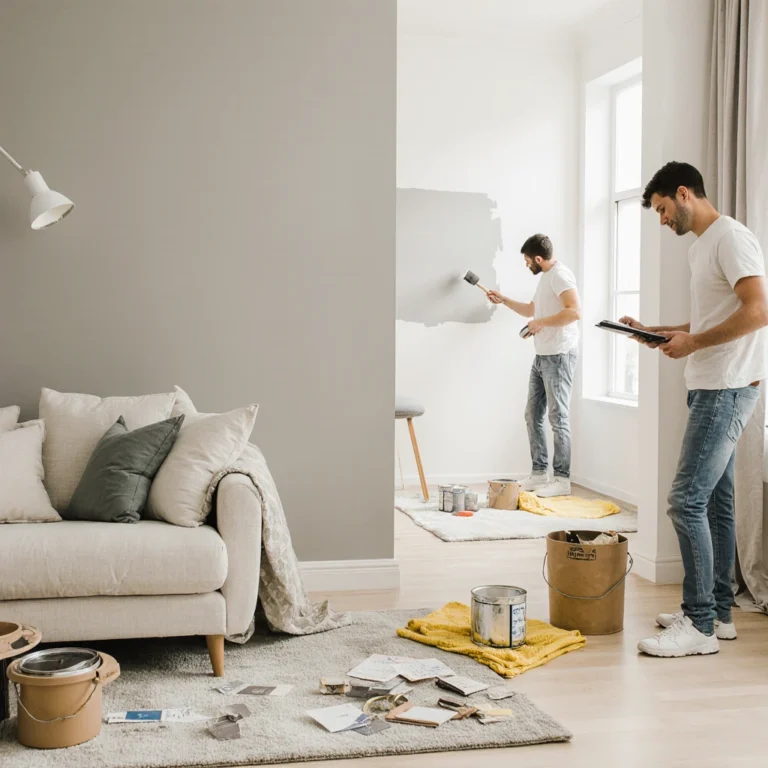
One Comment
Comments are closed.